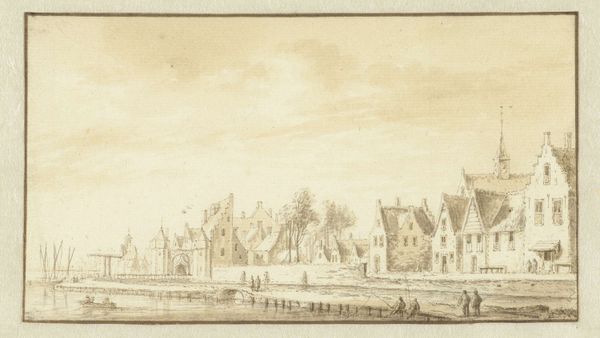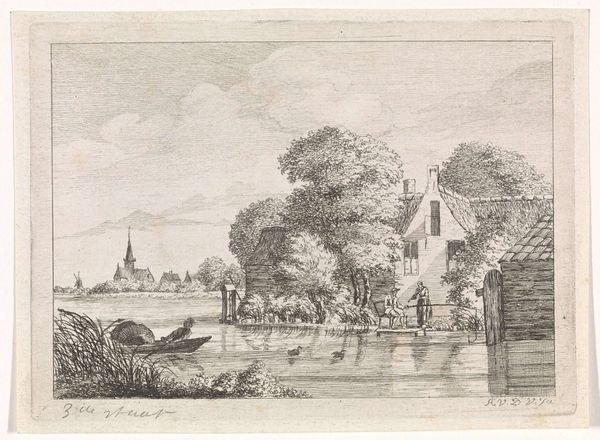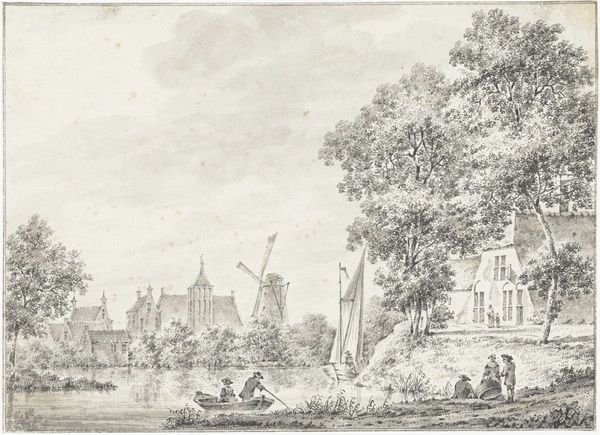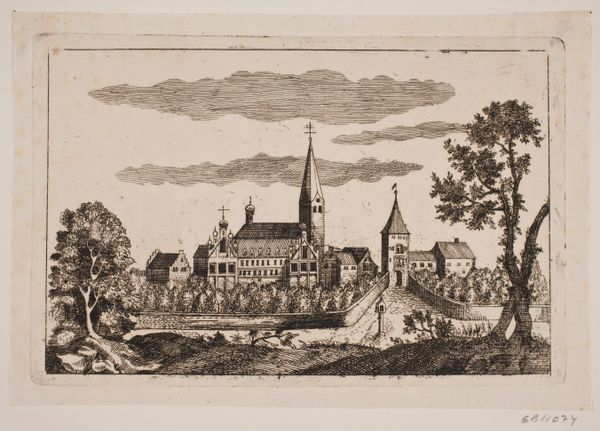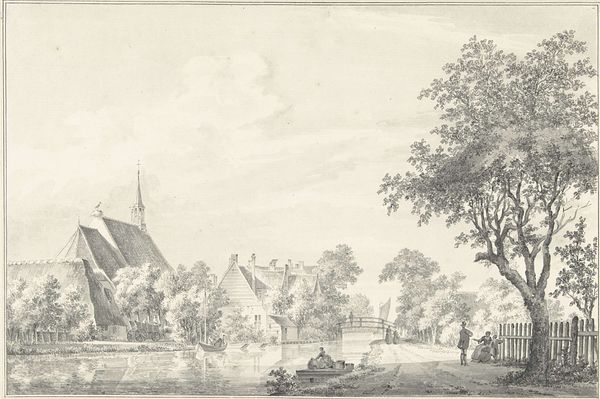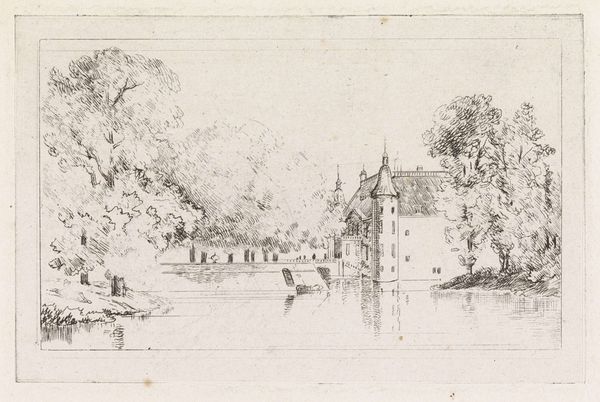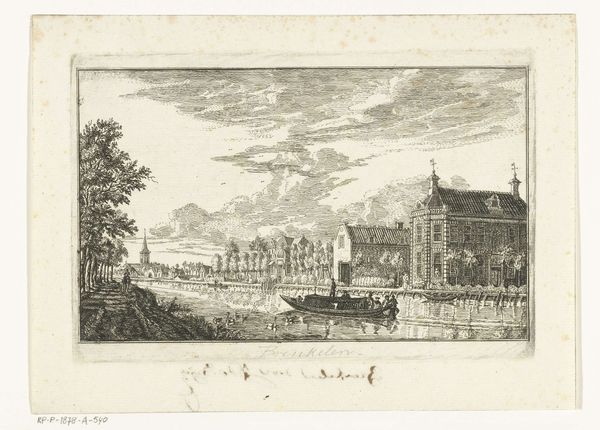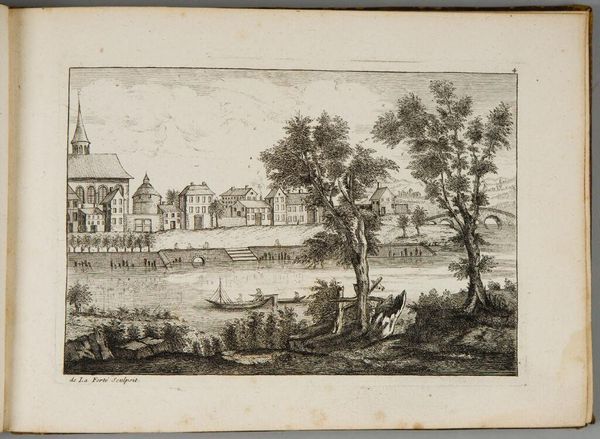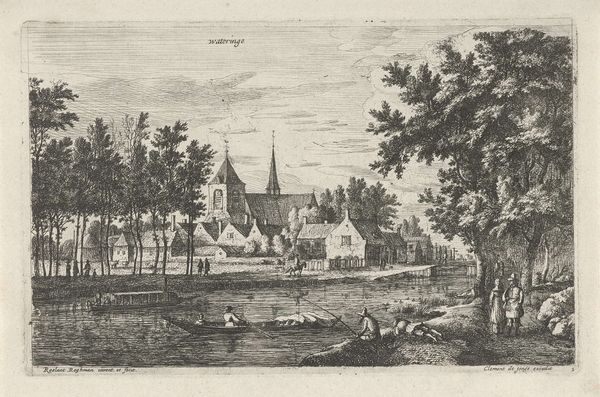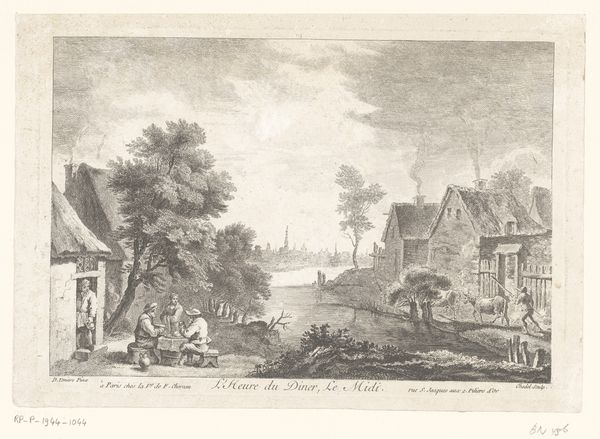
drawing, pencil
#
drawing
#
dutch-golden-age
#
landscape
#
pencil
#
cityscape
#
genre-painting
#
realism
Dimensions: height 96 mm, width 154 mm
Copyright: Rijks Museum: Open Domain
Editor: This is "Dorpsgezicht," a village scene drawing made with pencil around 1700-1800, by an anonymous artist. The scene feels so peaceful, but the composition seems almost divided, with the buildings on one side and the figure in the boat on the other. How do you interpret this work? Curator: The composition, while seemingly split, actually works through a delicate balancing act. Notice how the verticality of the church spire is echoed, though diminished, by the architecture on the left, leading the eye back into the central space via the water and the rowing figure. It creates a rhythmic structure across the landscape. Do you observe how the light subtly defines the forms? Editor: Yes, I see the light now, especially on the church. It creates a clear focal point and sense of depth. But why the division of space with the large tree in right and lone boat on the left? Curator: The tree functions almost as a coulisse, framing the central scene. It emphasizes depth, a compositional tool seen across landscapes of the Dutch Golden Age and later movements in Europe and America. Meanwhile the artist’s inscription, bottom left, has a balancing effect in relation to the tree. Editor: That’s a great way to look at it. So, it is not that the composition is split; it is more of an elaborate arrangement to keep the viewer's eye engaged throughout the entire image. Curator: Precisely. It is through that arrangement, a conversation in light and form across the paper, that the overall sensation of serenity is achieved, in fact it elevates our appreciation for line work. Editor: I see that now. I am much more appreciative of what this drawing can offer from both technical and structural perspectives.
Comments
No comments
Be the first to comment and join the conversation on the ultimate creative platform.
